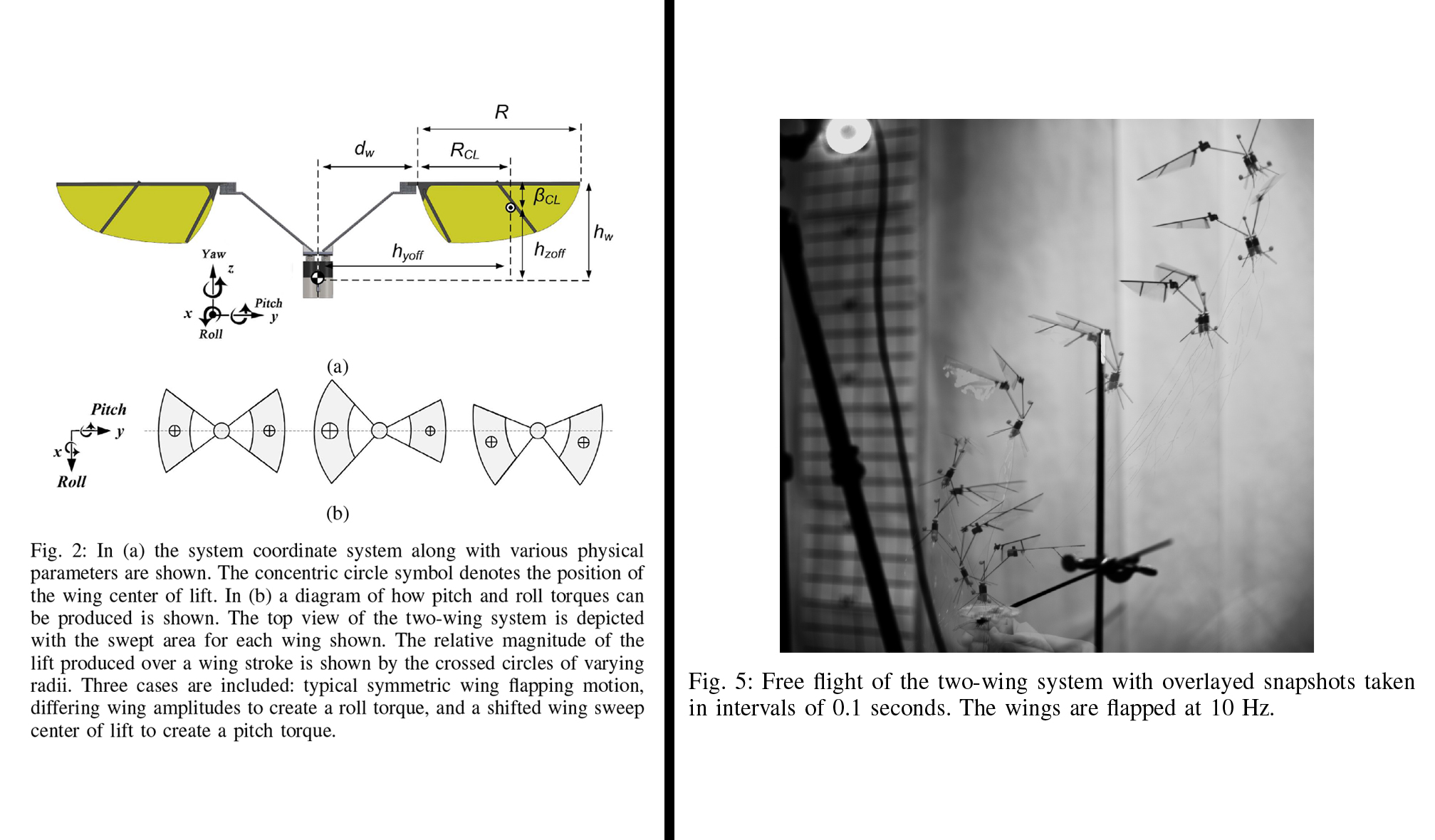Platform design and tethered flight of a motor-driven flapping-wing system

In this work, we examine two design modifications to a tethered motor-driven flapping-wing system. Previously, we had demonstrated a simple mechanism utilizing a linear transmission for resonant operation and direct drive of the wing flapping angle for control. The initial two-wing system had a weight of 2.7 grams and a maximum lift-to-weight ratio of 1.4. While capable of vertical takeoff, in open-loop flight it demonstrated instability and pitch oscillations at the wing flapping frequency, leading to flight times of only a few wing strokes. Here the effect of vertical wing offset as well as an alternative multi-wing layout is investigated and experimentally tested with newly constructed prototypes. With only a change in vertical wing offset, stable open-loop flight of the two-wing flapping system is shown to be theoretically possible, but difficult to achieve with our current design and operating parameters. Both of the new two and four-wing systems, however, prove capable of flying to the end of the tether, with the four-wing system prototype eliminating disruptive wing beat oscillations.
| Author(s): | Hines, Lindsey and Colmenares, David and Sitti, Metin |
| Book Title: | Robotics and Automation (ICRA), 2015 IEEE International Conference on |
| Pages: | 5838--5845 |
| Year: | 2015 |
| Month: | May |
| Day: | 26 |
| Bibtex Type: | Conference Paper (inproceedings) |
| DOI: | 10.1109/ICRA.2015.7140016 |
| Electronic Archiving: | grant_archive |
| Organization: | IEEE |
BibTex
@inproceedings{hines2015platform,
title = {Platform design and tethered flight of a motor-driven flapping-wing system},
booktitle = {Robotics and Automation (ICRA), 2015 IEEE International Conference on},
abstract = {In this work, we examine two design modifications to a tethered motor-driven flapping-wing system. Previously, we had demonstrated a simple mechanism utilizing a linear transmission for resonant operation and direct drive of the wing flapping angle for control. The initial two-wing system had a weight of 2.7 grams and a maximum lift-to-weight ratio of 1.4. While capable of vertical takeoff, in open-loop flight it demonstrated instability and pitch oscillations at the wing flapping frequency, leading to flight times of only a few wing strokes. Here the effect of vertical wing offset as well as an alternative multi-wing layout is investigated and experimentally tested with newly constructed prototypes. With only a change in vertical wing offset, stable open-loop flight of the two-wing flapping system is shown to be theoretically possible, but difficult to achieve with our current design and operating parameters. Both of the new two and four-wing systems, however, prove capable of flying to the end of the tether, with the four-wing system prototype eliminating disruptive wing beat oscillations.},
pages = {5838--5845},
organization = {IEEE},
month = may,
year = {2015},
slug = {hines2015platform},
author = {Hines, Lindsey and Colmenares, David and Sitti, Metin},
month_numeric = {5}
}

